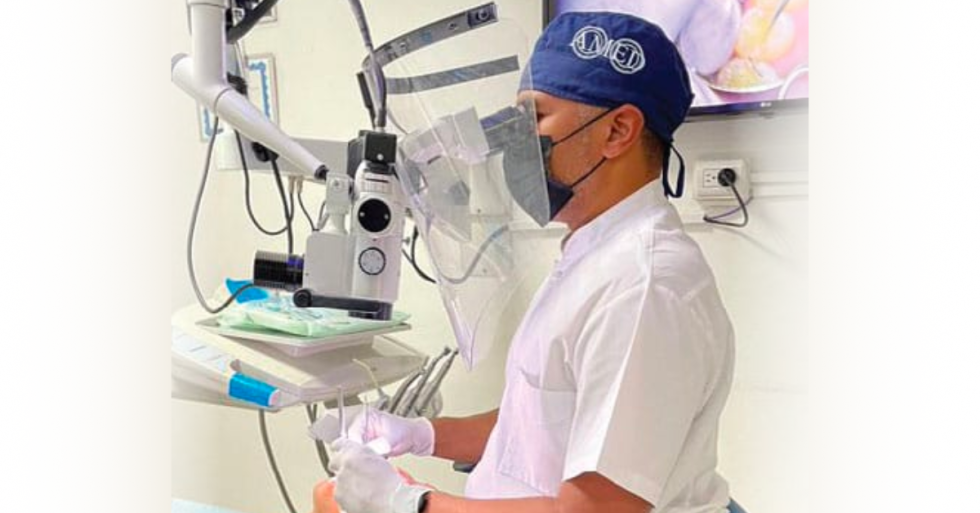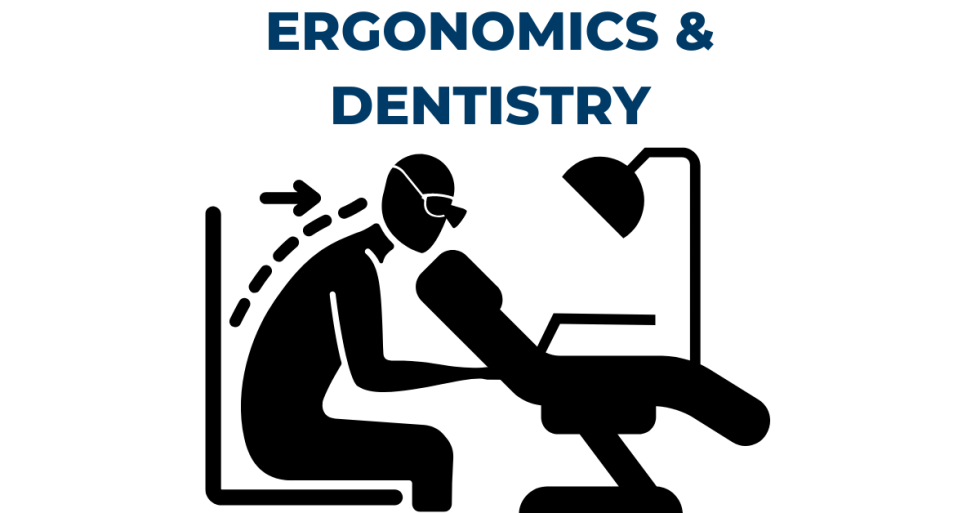The Fundamentals of Dental Ergonomics: Working Smarter and Pain-Free

This article contains excerpted material from Decisions in Dentistry. Written by Juan Carlos Ortiz Hugues, DDS, CEAS, an Endodontist practicing in Panama. He is a Global microscope user and has recently published “Ergonomics Applied to Dental Practice” published by Quintessence. He lectures globally on ergonomics using a microscope.
Dental professionals, given the nature of their work, often find themselves in postures that might lead to discomfort or health issues over time. Dental ergonomics goes beyond mere comfort; it’s about optimizing the work environment and practices to ensure safety, efficiency, and longevity in the profession.
Today, we’re going to review the four fundamental pillars of dental ergonomics, providing insights into maximizing their benefits.
1. Optimal Posture: The Foundation of Comfort
Maintaining the right posture is the cornerstone of ergonomic practice. The human body isn’t designed for prolonged static positions, especially the intricate stances dental professionals adopt.
- Head and Spine Alignment: Ensure your head remains balanced over the spine. Forward tilting, often done to gain better visibility, strains the neck muscles and spinal discs.
- Back Support: An ergonomically designed dental chair supports the natural arch of your lower back. Lumbar support can prevent slouching, reducing the risk of lower back ailments.
- Foot Placement: Your feet should rest flat, forming a 90-degree angle with your knees. This stance provides stability and prevents leg fatigue.
- Arm and Hand Ergonomics: Keep your elbows close to your body, with wrists straight. Floating armrests can offer additional support, reducing shoulder strain.
2. Efficient Workflow: Streamlining Processes
An efficient workspace reduces unnecessary movements, minimizing fatigue.
- Instrument Organization: Regularly used tools should be within arm’s reach. Consider using color-coded trays or specific setups for different procedures.
- Procedure Standardization: Establishing a consistent workflow for common procedures ensures every team member knows their role, reducing delays and unnecessary movements.
- Maximizing Dental Assistants: A well-trained assistant can anticipate needs, passing instruments or managing equipment, thus reducing the dentist’s movements.
3. Magnification and Lighting: Seeing Clearly and Safely
Good visibility is paramount in dentistry. Straining of your eyes, neck and back to see can not only affect the quality of work but also lead to physical discomfort. High-magnification tools play an important role in improving treatment quality by allowing the operator to see the work field better. Dental microscopes are designed with more ergonomic features when compared to dental loupes.
For more on this topic, check out our full article: Comparing Ergonomics: Dental Microscope vs Loupes.
- Targeted Illumination: Adjustable LED lights can offer bright, focused illumination, reducing shadows and improving visibility.
- Magnification Tools: Dental loupes, available in varying magnifications, enhance the field of view. For intricate procedures, consider investing in a dental microscope, which also encourages a more upright sitting position.
- Adjustability: Ensure that both lighting and magnification tools are easily adjustable, catering to different procedures and patient positions.
4. Regular Breaks and Exercises: Rejuvenate and Reset
Continuous work strains the body and mind. Regular pauses and exercises can mitigate this.
- Stretching Regimens: Simple stretches targeting the neck, back, shoulders, and wrists can alleviate muscle tension. Consider adopting techniques like yoga or Pilates tailored for dental professionals.
- Mindfulness and Relaxation: Short meditation or deep-breathing breaks can reduce stress and enhance focus.
- Awareness: Recognize signs of fatigue, both mental and physical. Listen to your body; if a particular method causes strain, reconsider your approach or consult ergonomic experts.
Questions? Reach Out!
As a US-based manufacturer of dental microscopes sold worldwide, we know a thing or two about magnification & ergonomics. If you’re considering adding a microscope to your practice or you just want to learn more about utilizing a dental microscope, we are here to help! Please feel free to reach out at 800-861-3585 or by clicking the button below.


.png)
